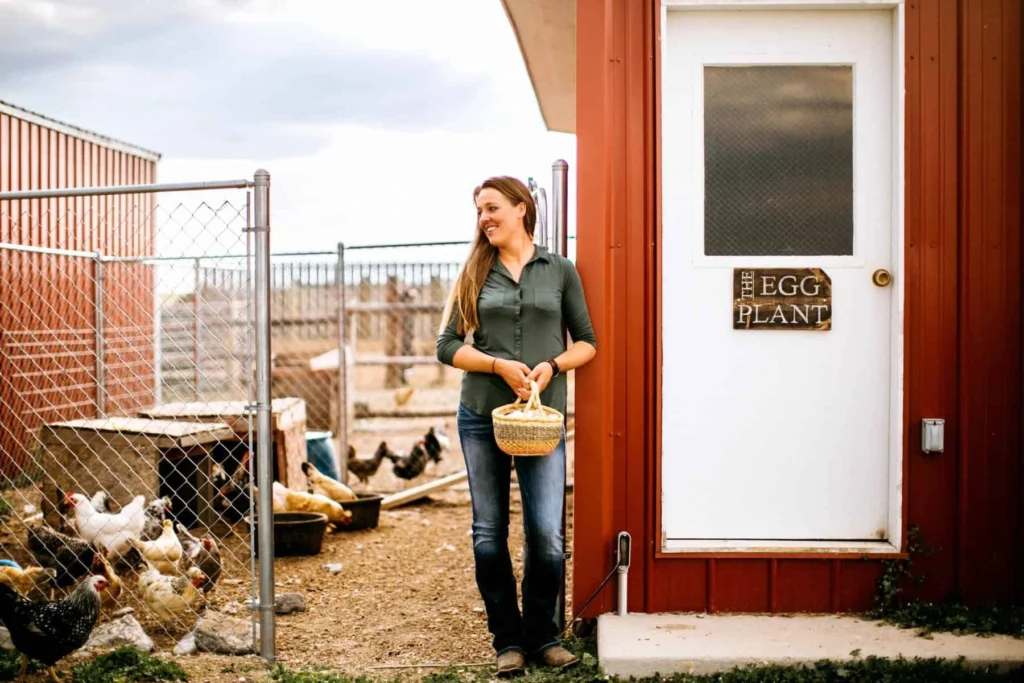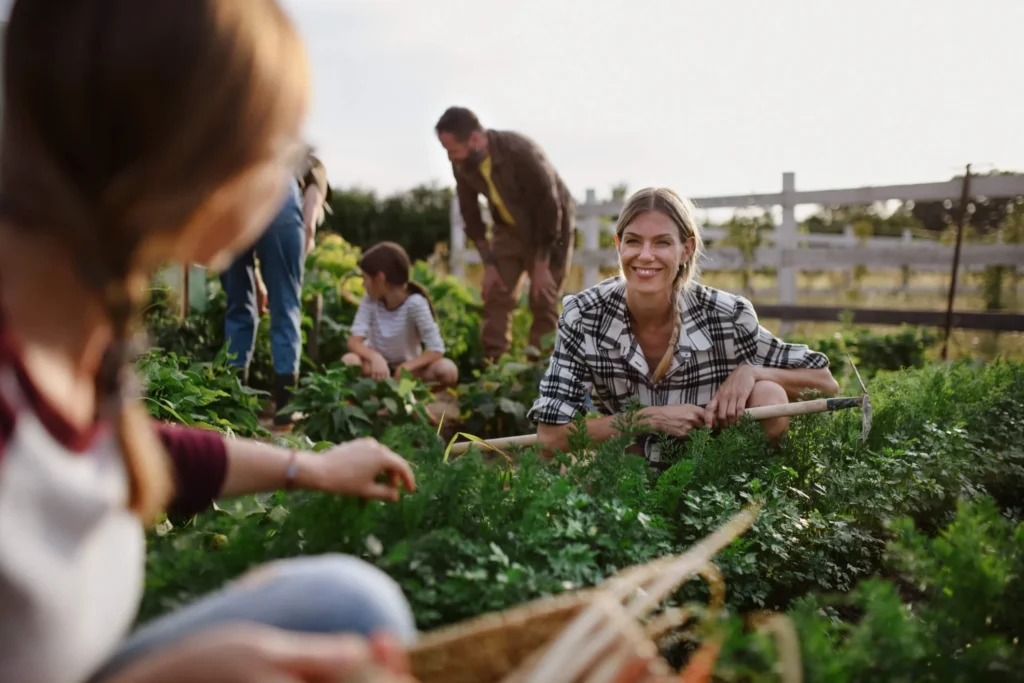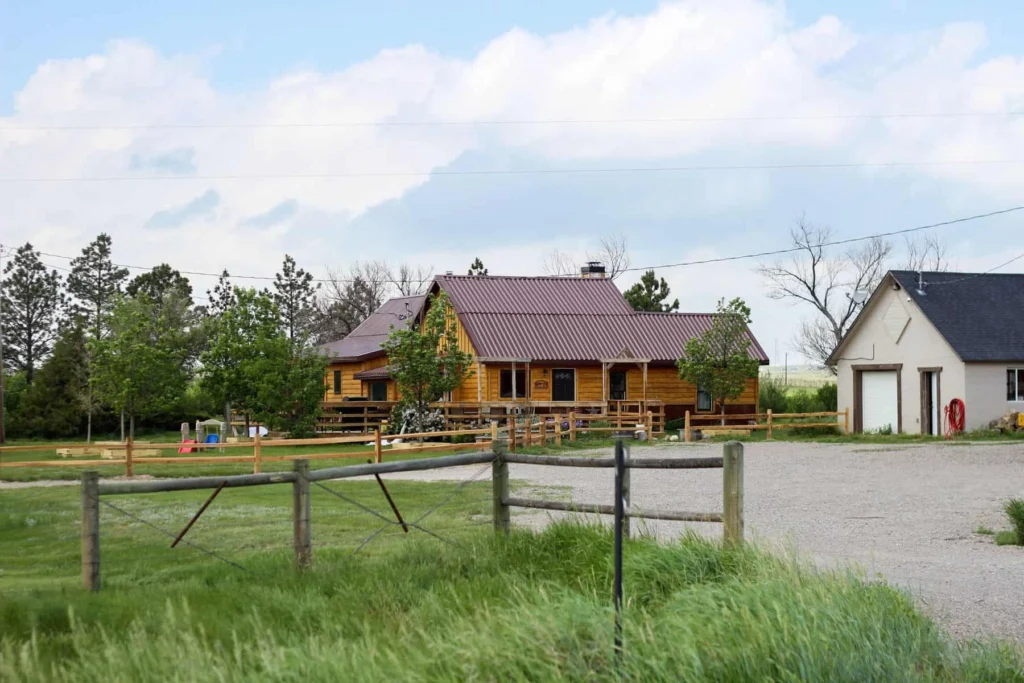How to Afford a Homestead
Look, I’m not gonna lie to you…watching people wake up to the absolute insanity of depending entirely on systems they have zero control over has been one of the most satisfying things I’ve witnessed in years. The pandemic was a harsh wake-up call, but it was also the kick in the pants that a lot of people needed.
Suddenly, everyone’s talking about growing their own food, raising their own animals, and creating some actual security for their families. And honestly? It’s about damn time.
But here’s where I see people getting tripped up constantly: they think homesteading requires this massive upfront investment, like you need to drop $200,000 on land and another $50,000 on infrastructure before you can even think about planting a seed. That’s complete nonsense, and it’s keeping way too many people on the sidelines.
Here’s the truth that nobody wants to tell you: homesteading is a mindset, not a bank account balance. You don’t need 50 acres, a $30,000 tractor, and a commercial-sized greenhouse to start living more sustainably. You just need to stop making excuses and start making moves.
I’m going to walk you through exactly how we went from dreaming about this life to actually living it—without going into debt, without winning the lottery, and without having rich parents to bankroll the whole operation. This isn’t theory. This is straight from someone who’s been elbow-deep in this lifestyle for over a decade.
How to Afford a Homestead
Before we dive into the nitty-gritty, let me set the record straight about what “affording a homestead” actually means. I’m not talking about financing your dreams with credit cards and hoping for the best. I’m talking about building something sustainable that you can actually pay for without mortgaging your future.
Our homestead wasn’t handed to us on a silver platter. When we started, we were living on one income, driving used cars, and making sacrifices that our friends thought were crazy. But every single decision we made was intentional, strategic, and designed to get us closer to the life we actually wanted to live.
The biggest mistake I see people make is thinking that homesteading has to look a certain way to be “real.” They get caught up in Pinterest-perfect farms and Instagram-worthy setups, then get discouraged when their budget can’t support that fantasy.
Here’s what I wish someone had told me when we started: your homestead doesn’t have to impress anyone else. It just has to work for you and your family. And working doesn’t mean perfect—it means functional, sustainable, and debt-free.
#1 What Does Your Dream Homestead Look Like?
This is where most people completely screw themselves over before they even start. They look at someone else’s decade-old homestead with beautiful barns, established gardens, and perfect Instagram photos, then try to recreate that exact setup in year one.
Stop. Just stop.
Before you start calculating costs or shopping for property, you need to get brutally honest about what you actually want, not what looks good on social media. Grab a notebook and write down everything that comes to mind when you imagine your ideal homestead. No editing, no judgment, just pure brain-dump everything.
Want a milk cow? Write it down. Want chickens? Add it to the list. Want a massive vegetable garden? Put it on there. Want to make your own soap? Include it. This isn’t about being realistic yet—this is about understanding what actually motivates you.
Once you have your list, start prioritizing. What are the non-negotiables? What are the nice-to-haves? What can wait five years? This exercise will save you thousands of dollars and years of frustration because you’ll stop chasing other people’s dreams and start building your own.
I cannot stress this enough: your homestead should reflect your values, your goals, and your lifestyle. If you hate gardening, don’t build your homestead plan around a massive market garden. If you travel frequently, maybe focus on low-maintenance systems instead of high-input livestock.
#2 Money Management to Afford a Homestead
Here’s where we separate the dreamers from the doers. Money management isn’t sexy, but it’s absolutely critical if you want to build a homestead that lasts.
Most people’s relationship with money is completely dysfunctional. They spend first, then hope there’s something left over for their goals. That’s backwards, and it’s why most homestead dreams die in the planning stage.
We’ve lived by the same money principles for years, and they’ve been the foundation of everything we’ve been able to build:
First: Eliminate all existing debt. I don’t care if it’s student loans, credit cards, or car payments. Debt payments are the enemy of homestead dreams because they consume money that could be going toward your land, animals, and infrastructure.
Second: Create a budget that actually works. I’m talking about zero-based budgeting where every dollar has a job before you spend it. If homesteading is a priority, it gets a line item in your budget just like rent and groceries.
Third: Change your money mindset. Stop thinking about money as something that just happens to you. Start thinking about it as a tool that you control and direct toward your goals.
Dave Ramsey’s debt snowball method saved our financial lives. We had over $30,000 in debt when we started this journey, and we attacked it like our dreams depended on it—because they did. Was it fun driving beat-up cars while our friends had new trucks? No. But it was temporary discomfort for long-term freedom.
#3 Making Sacrifices to Afford a Homestead

This is where I lose about half the people who ask me about homesteading. They want the result, but they don’t want to change their lifestyle to get there.
If you’re spending $200 a month on restaurant meals, $100 on coffee, and $300 on entertainment, but you’re telling me you can’t afford to start homesteading, you’re lying to yourself. You can afford it—you’re just choosing to spend your money on other things.
Look at your bank statements from the last three months. Where is your money actually going? Not where you think it’s going, but where it’s actually going. Those numbers don’t lie.
Now ask yourself: what can I cut without actually affecting my quality of life? Start there. Maybe it’s the daily coffee shop run. Maybe it’s the streaming services you never use. Maybe it’s eating out twice a week instead of five times.
Here’s what our sacrifices looked like in the early years: We didn’t eat out. We bought used everything. We worked side jobs. We said no to expensive vacations and fancy cars. Our friends thought we were crazy, but our bank account started growing instead of shrinking.
The key is remembering why you’re making these sacrifices. You’re not depriving yourself—you’re trading short-term comfort for long-term freedom. Every dollar you don’t spend on unnecessary stuff is a dollar that can go toward your homestead goals.
#4 Self-Fund Your Homestead
Here’s where homesteading gets really interesting from a financial perspective: it doesn’t just have to cost money—it can make money too.
The goal is to create systems where your homestead helps pay for itself. This isn’t about getting rich quick; it’s about reducing the financial burden so you can build sustainably.
Start by looking at what you already have or what you’re already doing that could generate income:
Skills you can monetize: Can you build things? Fix things? Teach things? Design things? All of these have value in the homestead community.
Products you can create: Eggs, vegetables, herbs, baked goods, crafts, preserved foods. Start small, focus on quality, and build a reputation.
Services you can offer: Animal care, farm sitting, consulting, workshops. People will pay for knowledge and experience.
We started selling surplus eggs for $3 per dozen. Nothing fancy, just clean eggs in reused cartons. That small income stream helped fund our next projects and taught us valuable lessons about running a homestead business.
The key is to avoid the trap of spending more money than you make. If you’re buying $200 worth of supplies to make $100 worth of products, you’re doing it wrong. Track your actual costs and profits, and focus on the ventures that genuinely contribute to your homestead funding.
#5 Start Small and Gradually Add More
This is probably the most important advice I can give you, and it’s the advice that people ignore most often. Everyone wants to go from zero to full homestead overnight, and that’s a recipe for financial disaster.
Do not go into debt for homestead projects. I don’t care how good the deal is or how much you “need” that particular animal or equipment. If you can’t pay cash for it, you can’t afford it yet.
Start with projects that have low barriers to entry and quick returns:
For beginners: A few laying hens, a small herb garden, learning to cook from scratch, making your own cleaning products. These require minimal investment but teach valuable skills.
As you grow: Expand your flock, add meat chickens, start a vegetable garden, learn food preservation. Each success builds confidence and skills for the next level.
Eventually: Larger livestock, permanent infrastructure, value-added enterprises. By this point, you’ll have the experience and hopefully the income streams to support bigger investments.
We didn’t buy our first goats until we’d been successfully raising chickens for two years. We didn’t build our big garden until we’d proven we could manage smaller plots. Every step built on the previous one, both in terms of skills and finances.
#6 Build Relationships to Help Afford a Homestead

One of the most overlooked aspects of affording a homestead is the power of community and relationships. The old-school homesteading tradition of helping neighbors and bartering goods and services isn’t just feel-good nostalgia—it’s practical economics.
Get to know your neighbors. Especially the ones who share your values or have skills you need. These relationships can save you thousands of dollars over the years.
Learn to barter effectively. Trade your surplus eggs for someone’s extra hay. Exchange your graphic design skills for help building a chicken coop. Swap your homemade bread for fresh vegetables.
Join or create homesteading communities. Whether online or in person, these connections provide knowledge, support, and economic opportunities.
I’ve bartered everything from web design work for bulk feed to surplus vegetables for meat processing. We’ve borrowed tools, shared labor, and traded skills more times than I can count. These relationships have been worth their weight in gold—literally.
But remember: successful bartering requires that you bring value to the table too. Don’t be the person who only takes—be someone who contributes skills, knowledge, or products that others value.
What Does Your Future Homestead Look Like?
Here’s the bottom line: there’s no one-size-fits-all solution to affording a homestead. Your path will look different from mine, and that’s exactly how it should be.
What matters is that you start with a clear vision, manage your money intentionally, make strategic sacrifices, and build gradually over time. The homestead you create debt-free will be more valuable than any financed fantasy, and it’ll be truly yours.
We followed these principles, lived within our means, and made sacrifices that seemed crazy to our friends. Today, we have a thriving homestead that supports our family and employs other people. It wasn’t luck, and it wasn’t handed to us—it was the result of consistent, intentional decisions over many years.
Your homesteading journey will have its own obstacles and victories. There will be setbacks and unexpected expenses. But if you stick to these fundamentals—clear vision, smart money management, strategic sacrifices, gradual growth, and strong relationships—you’ll build something that lasts.
Remember: homesteading is about what you learn and become on the journey to self-sufficiency and independence. The financial principles that get you there will serve you well in every aspect of life.
Now stop reading about affording a homestead and start building one. The life you want is waiting for you to get serious about making it happen…..


Leave a Reply